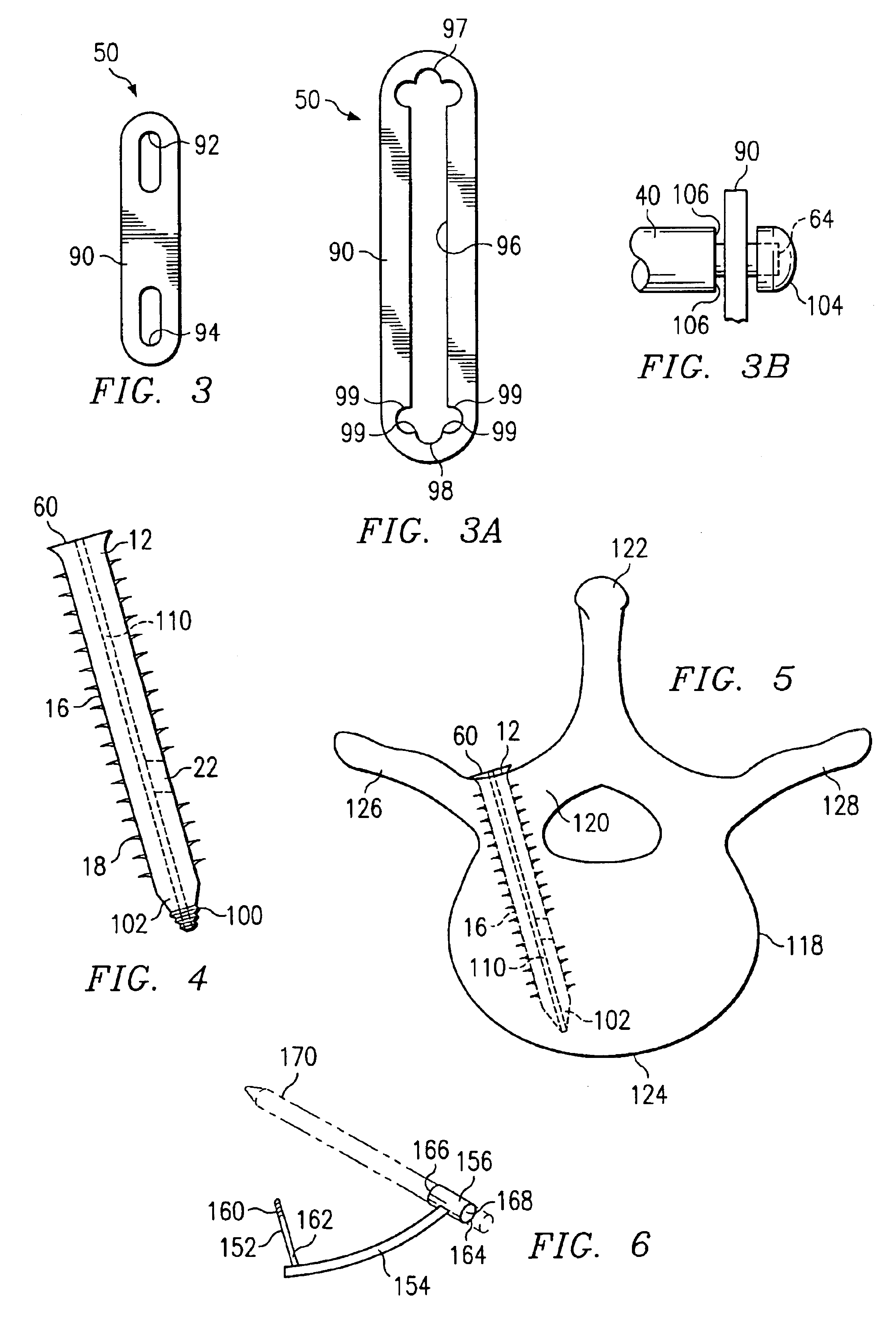Vertebral stabilization assembly and method
a technology of vertebral stabilization and assembly, which is applied in the field of spinal stabilization, can solve the problems of increased surgical time, increased patient risk, and major muscle damage, and achieves the effects of reducing the total time required, and reducing the risk of major muscle damag
- Summary
- Abstract
- Description
- Claims
- Application Information
AI Technical Summary
Benefits of technology
Problems solved by technology
Method used
Image
Examples
Embodiment Construction
[0104]It should be understood at the outset that although an exemplary implementation of the present invention is illustrated below, the present invention may be implemented using any number of techniques, whether currently known or in existence. The present invention should in no way be limited to the exemplary implementations, drawings, and techniques illustrated below, including the exemplary design and implementation illustrated and described herein.
[0105]FIG. 1 illustrates one aspect of the vertebral stabilization assembly 10 constructed in accordance with the present invention. The vertebral stabilization assembly 10 is an innovative device for stabilizing a plurality of vertebrae of the spine. The vertebral stabilization assembly 10 includes a first pedicle screw 12 and a second pedicle screw 14. The first pedicle screw includes a shaft 16 provided with a threaded portion 18. The threaded portion 18 of the shaft 16 is operable for threading engagement of the first pedicle scr...
PUM
 Login to View More
Login to View More Abstract
Description
Claims
Application Information
 Login to View More
Login to View More - R&D
- Intellectual Property
- Life Sciences
- Materials
- Tech Scout
- Unparalleled Data Quality
- Higher Quality Content
- 60% Fewer Hallucinations
Browse by: Latest US Patents, China's latest patents, Technical Efficacy Thesaurus, Application Domain, Technology Topic, Popular Technical Reports.
© 2025 PatSnap. All rights reserved.Legal|Privacy policy|Modern Slavery Act Transparency Statement|Sitemap|About US| Contact US: help@patsnap.com



